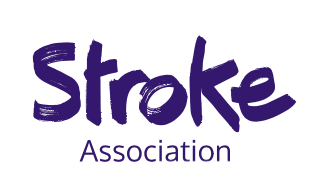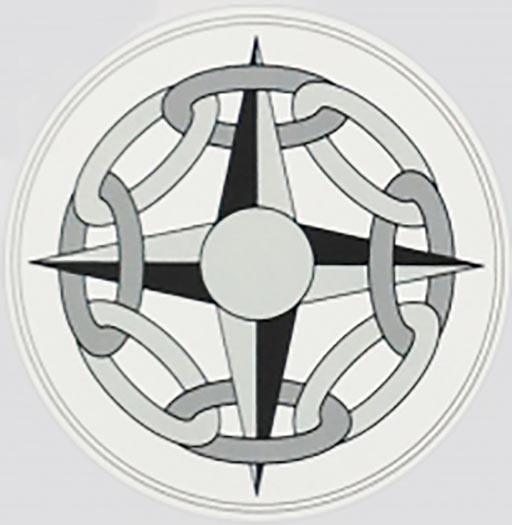The Area
SCARBOROUGH CHAIRMAN OF THE AREA COUNCIL
1936-7 S. D. McCloy Area 10
1951-2 W. L. Woodcock Area 15
1955-6 A. Slater
1964-5G. T. V. Pindar
1968-9 C. M. Thorpe (Vice-Chairman)
Note: Eleven Areas came into being in 1933. The North-East Coast was No. 10 with two Tables, soon becoming four: Hull, Bridlington, York and Scarborough. In 1950 the growth of the movement made it necessary to organise existing Area boundaries and to create many more Areas. No. 10 became No. 15, with the addition of an increasing number of new Tables (now totalling 16), extending up the coast from the Humber to Whitby, across to Ripon by way of Thirsk, south to Harrogate and down to Hull by way of York and Pocklington/Market Weighton.
Although this book is intended to be an account of one Table in the great network of British Tables, reference has been made from time to time to the Area of which it is part. In the Area a wider fellowship has developed beyond the confines of the Table. This has affected not only the Area but the Table itself.
In the pre-war years the Area made less impact than it was to do in the post-war years. Area Councillors were duly elected and met at infrequent intervals at convenient hostelries in East Yorkshire. Area meetings, dinners, rallies, golf tournaments and other social events were held, but in those early years most Tables were more intimately concerned with their own development and affairs and incursions into social service.
When war came, the Area was the first casualty (see Chapter 2) and from 1939 any infrequent Area business was conducted by correspondence. The next war casualty was the whole of the Area records, minute book and Chairman’s jewel. The Area Secretary, W. R. Irving, kept them at his office at Reckitts, and on the night of 5-6 May 194 they were destroyed by enemy action, together with much of Reckitts and a lot more of Hull.
Fortunately Rob Irving was on duty elsewhere at the time. [83]
Post War
On the resumption of peace the activities of the Area were largely concentrated on extension (see Chapter 5) and as new Tables formed and began to play their part it gradually became apparent that a new and closer relationship was developing between Table and Area – which is another way of saying between Table and Table within the Area – and between Area and the National body.
At this point Mick Thorpe, present Vice-Chairman of the Area and a member of the National Executive, has been prevailed upon to take up the story, an eventful story in which he has played a great part in more recent years:
* * * *
In the post-war years there began to develop an administrative side to Area affairs, and with it came a gradual awakening to the possibilities of Area as a bridge between Table and National
A significant contribution to this development was the introduction in 1960 of the Area Sales Scheme whereby National publications, badges, ties etc. were distributed through Area Sales Officers and no longer directly by National headquarters to Tables. The Publications Convener responsible for pushing the Area Sales Scheme was Colin Sedgwick. Besides providing Areas with a specific administrative function the scheme provided funds, through the 15% discount allowed to Area, which assisted the financial running of Area affairs and helped to keep down the cost of the annual contribution made to Area by Tables.
Along with many other Areas throughout R.T.B.I., Area 15 developed strongly in the fifties and sixties. Area rallies were resumed, and later the Tom Park Trophy stimulated inter-Table contests*. The more outlandish the game, the better fun for all concerned; but it was not always funny. It was at a Tom Park football match with Beverley that Brian Heaps sustained a serious injury to his wrist, and in the best traditions of closing the stable door a National Personal Accident Scheme, to insure against such mishaps, was instituted a few months later.
*This trophy, presented in 1964 by past Area Chairman Tom Park, of York, is subject to an extremely interesting set of rules. No. 2 says ‘The Trophy shall be competed for between two or more Tables in any competition that the challenging Table shall decide.’ No. 5 says ‘If the Trophy should change hands by any other means than by competition, it shall be returned to the holder at an inter-Table meeting held for that purpose.’ The word any’ in these rules permit many ingenious interpretations, which Table minds have not been how to think up.
Inter-Table visiting prospered and Tablers, seeing one another at Area meetings, had in all likelihood met already at a respective Tables. A shot in the arm was given to inter-Table visits by the presentation of a Trophy in 1968 by past Area [84] Chairman Mike Hollingbery of Hull and Humberside, to be competed for annually and to be awarded to the Table whose members had on a proportionate basis made the most inter Table visits within Area during the year. In the first year Scarborough were placed second.
By about 1964 it was found that there was not enough time available at Area dinner meetings to discuss and decide upon the increasing number of items of business channelled through Area.
The business meeting was accordingly introduced. Three or four times a year the Area Officers, together with two Councillors from each Table, met at the Talbot or the Green Man at Malton, and, fortified by pickled onions and chunks of cheese, coped with substantial agendas of Round Table business. Sometimes the stimulation of argument and the consumption of beer made the discussion extend towards midnight. However keen the argument and outspoken the criticisms there was never any rancour afterwards to upset the harmony of fellowship at the end of the meeting.
In all these growing activities Scarborough took a prominent and often a leading part. They organised the first post-war Rally at the Royal Hotel. Following subsequent visits to Bridlington, Whitby and Harrogate, the Rally returned to Scarborough, and looks like becoming a permanent fixture. Area Rallies are basically, almost exclusively, social affairs – a formal dinner and dance on Friday evening, sporting and energetic pursuits on Saturday, fancy dress party in the evening, and farewell lunch with a guest speaker on Sunday.
Scarborough Table has usually featured in the cabarets* and through its members serving on the Area Executive or Rally committees has helped to achieve a growing participation in these week-end events. Over the years Geoff Heselton, Tom Pindar, Peter Cooper and Geoff Winn, to name but a few of many, have made valuable contributions in this field.
*Not infrequently in the person of Mick Thorpe himself, whose forensic eloquence can rarely have been heard to better advantage, even in higher places.
Until 1965 the choice of Area Chairman was by tradition determined on a rota system by which each Table in turn nominated the Area Chairman, and he usually selected a Secretary and Treasurer from his own or a nearby Table. This system was supported on the principle that it gave each Table in turn an equal chance of having the honour of providing the Area Chairman from its ranks, and also that by so doing it stimulated interest in the Area within that Table. These were sound arguments when the Aren comprised only six or eight Tables, but with its growth in numbers it could not go on prospering in a system that could fortuitously prevent a member from becoming an Area Chairman during his Table career if his own Table had produced an Aren Chairman a few years earlier. [85]
Colin Sedgwick attacked the rota system with vigour both in Scarborough Table and at Area, but during his era the rota system remained. After a vigorous debate at a business meeting in November 1965 it was decided that the Area Chair should be elected by a free democratic vote of every Table in Area. Nevertheless the rota protagonists achieved an element compromise by the provision that ‘no Table shall provide Area Chairman more than once in three years.’ This compromise amendment to the Area standing orders failed to achieve the approval of National, or indeed the lasting support of the Area. In November 1968, on a proposition from Scarborough Table, this last remnant of the rota system was formally buried. Thus the arguments of Colin Sedgwick, unacceptable to the Table at the time, were eventually carried in Area five years later by the efforts of the Table to which Colin had pleaded in vain.
Area now offers possibilities in Round Table which would not be open at Table level. For example, during 1967-8 Gerry Strefford, acting as Area Community Service Liaison Officer, obtained the approval of Area to the support of a Voluntary Service Overseas student and raised the £250 necessary to send the student on a teaching project to Malaya. In the international field, also, the efforts of the International Relationships Officer, currently Peter Cooper, can weld together the minority in each Table interested in international affairs and give local Round Table an injection of the spirit of internationalism.
The most recent innovation in Area 15 has been the quarterly news sheet which grew up at Christmas 1968 into a fully-fledged printed magazine, surely the forerunner of many such issues.
Area provides the forum for the preliminary expression of a Table’s views on matters of Round Table policy or rules. A proposition by Scarborough Table to amend the classification rule to allow a Table with a membership of over 30 to include any three members from the same classification passed from Scarborough’s Membership Committee to Council, to Table and to Area Council. It was there debated and approved and was included in the National Council agenda. Although opposed at that level by the National Membership Convener and Committee, it found favour with the National Council, achieved the necessary majority and went on the agenda of the National A.G.M. at Pwllheli. It was accepted by that meeting and found a place in the National Rules – possibly the first time that Scarborough Table has achieved that distinction, if an alteration to Rules can properly be called a distinction!
In 1966 Area 32 decided that Areas should be known not on by numbers but by names, and a resolution to that effect was accepted. After suggestions had been invited and a number of possibilities discussed and discarded, the name ‘The Ridings’ was eventually adopted to indicate that Area 15 extended into all three parts of Yorkshire, to say nothing of York itself. Within [86] Area the name is not much used, but as one moves around the country one finds it increasingly common for Areas to be known names, which all have a geographical connotation and ate with a fair amount of accuracy the location of each Area.
Louis Marchesi famous words about the idea of Round Table, ‘It’s going to get bigger and bigger – it’s true, you know,’ could be applied with great accuracy to Area 15. That it has prospered, developed and become an important part in the affairs of every Table within it has been due in considerable measure to the efforts of all those who have seen in Area an extension of their enjoyment of Round Table. It is the aim of the present members of Scarborough Table, and it is hoped of their successors, that Area 15 will be in its own sphere as enjoyable, as much fun and as significant as its constituent Tables have already made it. [87]

